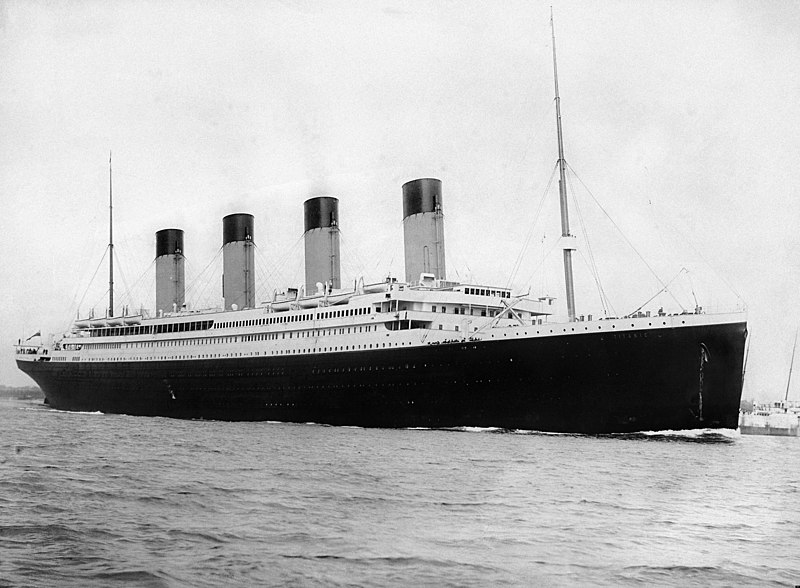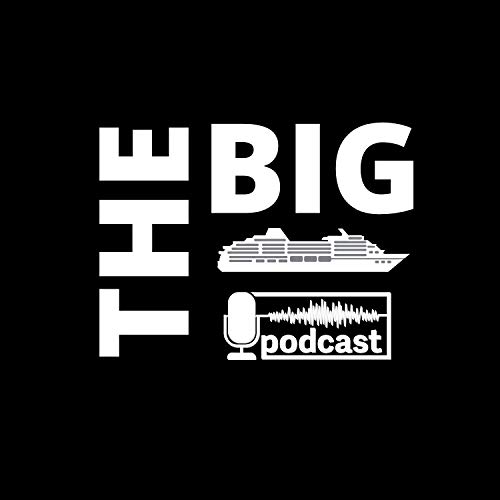Titanic

There is perhaps no more famous ocean liner today than RMS Titanic. The ship was the second in the Olympic-class of Ocean Liners, developed for the White Star Line – the others being Olympic and Britannic.
Olympic was the class leader, and at the time of her launch in 1910, she was heralded as the world’s largest liner. Her maiden voyage in 1911 was a triumph, and the ship was widely publicised and photographed in those early years.
Titanic was slightly larger than Olympic, owing to a few internal changes made to the design of the ship. Dimensionally, the two ship’s were the same length and width. Titanic was advertised as the world’s largest ship, but before her maiden voyage she did not have the same fame that Olympic did, as she was the second in the class and thus not quite so newsworthy.
The ship departed Southampton on her maiden voyage on 10 April 1912. After a near-collision with the steamer New York in Southampton water, Titanic sailed for New York via Cherbourg and Queenstown (Cobh).
On the evening of April 14, 1912 at around 11:40pm the lookouts spotted an Ice Berg in Titanic’s path. Despite the best efforts of her first officer, William Murdoch, to port-around the berg, the ship collided with it causing unrecoverable damage.
Due to the maritime regulations at the time, Titanic (like most liners) was not carrying enough lifeboats to evacuate all passengers and crew. This design shortfall was the result of a prevailing safety paradigm at the time. This idea was based on the inclusion of watertight bulkheads in ship design, as well as the growing adoption of advanced radio communications. These advances in safety measures led authorities to believe that if damaged, a ship like Titanic would sink very slowly, if at all.
Thus, it was believed that the lifeboats would really only be required to ferry passengers and crew to rescue vessels should a ship such as Titanic require a full evacuation. Sadly this prevailing belief proved catastrophically wrong. Although Titanic sunk relatively slowly, taking over 2 hours to founder, the nearest responding rescue ship was Carpathia, over four hours away.
When Titanic sunk in the early morning of April 15, 1912, 1,500 people lost their lives. Most of those who perished died from exposure to the extreme cold, resulting in hypothermia. Those who did survive were taken aboard Carpathia, which sailed to New York.
The story of Titanic is well documented – in far more detail than provided here. Recommended reading includes Encyclopaedia Titanica, while the Historic Travels YouTube channel details Titanic’s story in great depth.
Some interesting Titanic facts
Titanic was not heavily photographed before she set sail on her maiden voyage. This is because she was the 2nd in the Olympic class. Most of the interior spaces that the two ships shared had been photographed aboard Olympic when she entered service in 1911. Photography was expensive in 1912, and thus, many of the images you’ve seen of Titanic are actually images of Olympic, including the iconic Grand Staircase, as there are no known photos of Titanic’s grand staircase. Learn more:
Titanic FAQ
Was Titanic the biggest ship?
At the time of her maiden voyage, Titanic was the largest liner in the world. She was practically the same size as Olympic, however Titanic’s gross registered tonnage was slightly higher than Olympic, due to the closing in of promenade space aboard Titanic (it was open promenade aboard Olympic and thus not included in the tonnage calculations).
Is Titanic smaller than modern cruise ships?
Yes, much smaller. Today Titanic would be considered a small-to-midsized ship. She is much smaller than the world’s largest ocean liner, Queen Mary 2. Titanic is also dwarfed by many cruise ship designs, and is far smaller than Royal Caribbean’s Icon, Oasis and Quantum Class, Carnival’s Excellence class, Norwegian’s Breakaway Class or MSC’s World Class.
Did Cunard save Titanic?
The Cunard Liner Carpathia was the ship that rescued all of the Titanic survivors. The ship was under the command of Captain (later Commodore) Arthur Rostron at the time. When Carpathia’s wireless operator received Titanic’s distress call, Captain Rostron ordered a course set to intercept Titanic.
Why did it take so long for Carpathia to arrive?
Time was not on Carpathia’s side – the ship was around 4 hours away steaming at maximum speed. In fact, the crew of Carpathia ensured their ship could make maximum speed on that rescue mission by closing off non-essential services and diverting all power to the engines.
Was Titanic a Cunard ship?
No! Titanic was a White Star Line ship. White Star Line was, at the time, owned by J.P. Morgan’s International Maritime Mercantile (IMM). Cunard and White Star merged in 1934, 22 years after Titanic sunk.
Was Titanic a steamship?
Yes, Titanic was a steamship. Her official designation was SS (Steam Ship) Titanic, however she was also known as RMS (Royal Mail Ship) due to her onboard post office and mail carrying capacity. The ship was powered by twin reciprocating engines and a central turbine.
Is Titanic bigger than Queen Mary 2?
Did Titanic carry dogs aboard?
Yes – there were 12 dogs carried aboard and 3 of them survived the disaster. Learn more:
Was Titanic as fast as Lusitania and Mauretania?
No. Titanic was a far slower ship. Although she was built for a speedy transatlantic service, Titanic could never compete for the prestigious Blue Riband, held by Lusitania and Mauretania. Learn why:
Image of Titanic CC.O Public Domain.


